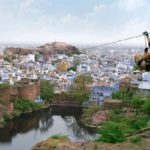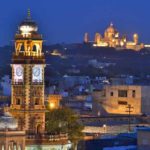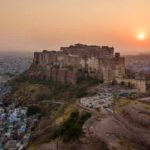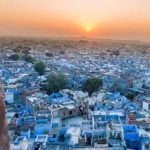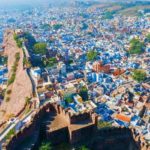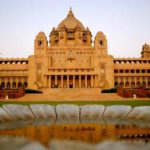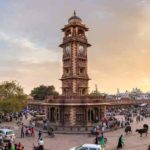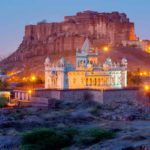The Blue City of Jodhpur The second-largest city of Rajasthan, Jodhpur is famously well-known as “Blue City”. It is called so as the old part of the city is painted in blue color. It is also referred to as the “Gateway to Thar” sometimes due to being located in the proximity of the Thar Desert. It is also called as the “Sun City” because the weather in the city remains sunny and humid all-round the year.
Why is Jodhpur called the Blue City?
Jodhpur is known as the Blue City because all of the buildings in the oldest district are painted in a light shade of blue. This district lies to the north of the city and the colour scheme is almost uniform. The best vantage point to view the blue painting of Jodhpur is from the Meherangarh Fort’s battlements The Blue City of Jodhpur.
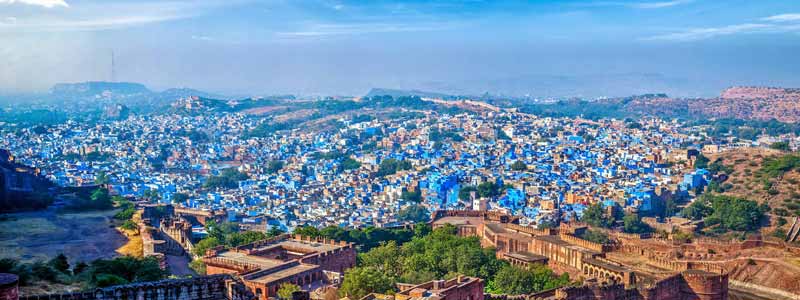
Major Tourist Attractions in Jodhpur
There are several forts, palaces, castles, markets, lakes, and temples in the city. All of these together contribute to the popularity of Jodhpur. The city holds great historical importance and is also abundant in terms of culture and heritage. The Rajput chief of the Rathore clan laid foundations of the city. Despite modernism, the city has retained its traditional appearance. It is an epitome of the culture and lifestyle of Rajasthan. The Blue City of Jodhpur One can also see traditionalism in the colorful outfits of the locals.
Apart from the vibrant culture, Jodhpur is also famous for amusement parks, cafes, lounges, and malls. If you wish to join in the fairs and festivals, then visit Jodhpur during the festival season. Some of the most popular fairs and festivals hosted in Jodhpur are Nagaur Fair, Marwar Festival, and Jodhpur International Desert Kite Festival. Adventure junkies can also get a fair share by trying hands-on activities like paragliding and zip-lining.
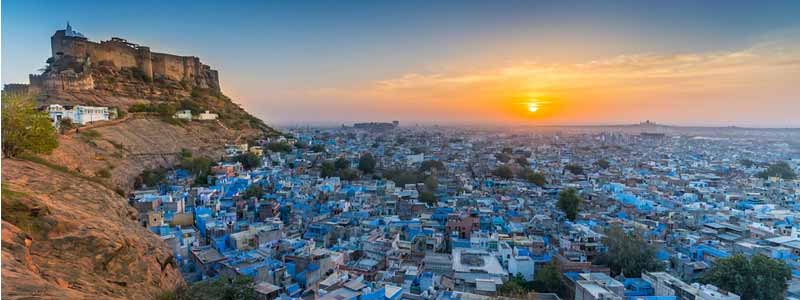
Mehrangarh Fort
Surrounded by huge walls, Mehrangarh Fort is situated at a height of 410 feet. Covering an area of about 5 km of the hill, the fort is located in the heart of the hill. The fort features walls as tall as 36 m and as wide as 21 m. counted amongst the largest forts in India, this fort was constructed in 1459 by Rao Jodha. There are as many as 7 gates in the fort, namely Victory Gate, Fateh Gate, Gopal Gate, Bhairon Gate, Dedh Kamagra Gate, Marti Gate, and Loha Gate. It also consists of grand palaces – Sheesh Mahal and Phool Mahal.
The museum also contains some finest collection, which boasts of the glorious past of the region. The Blue City of Jodhpur Besides, there are many temples inside the fort such as Chamunda Temple, Nagnechi Mataji Temple, etc.
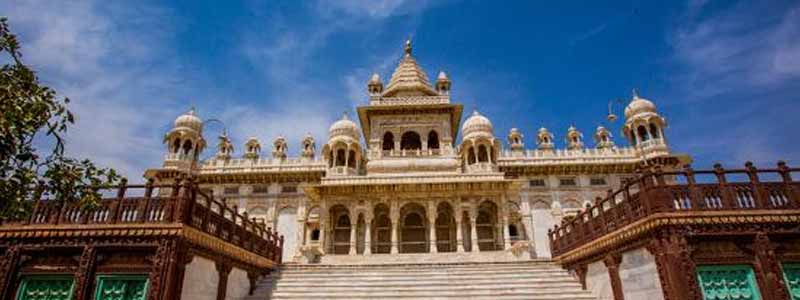
Jaswant Thada
Another architectural wonder in Jodhpur is Jaswant Thada. It is located at a distance of 1 km from Mehrangarh Fort. Maharaja Sardar Singh constructed this cenotaph in 1899 as an honor to his father, Maharaja Jaswant Singh II. Carved out of white marble, the site is used as a cremation ground for the members of the royal family till date. Representing the captivating artwork including the portraits of Rathore kings, The Blue City of Jodhpur the royal edifice depicts a lot about the lifestyle of the royals. This cenotaph is also known as the Taj Mahal of Marwar sometimes.
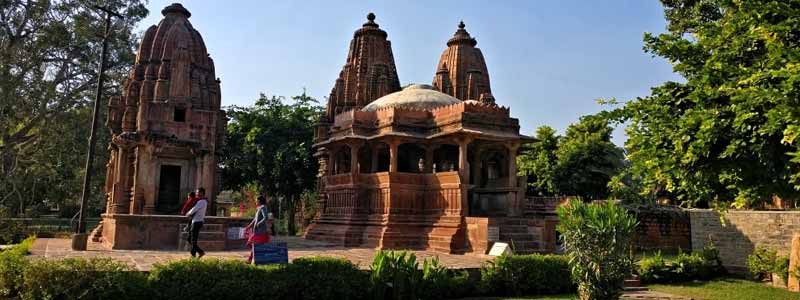
Mandore Gardens
These gardens are nestled at a distance of 9 km from north Jodhpur. These gardens are famous due to their exquisite architectural work, distinguished memorial, and lush green beauty. This is a perfect point of interest for nature lovers as well as history buffs. The architecture of the cenotaphs is inspired by that of the Hindu temples. The most famous cenotaph is dedicated to Maharaja Ajit Singh. The awe-inspiring charm of gardens and red sandstone structures together make up for the appeal of the site.
Constructed as a dedication to the deities and Rajput fighters, Hall of Heroes also features in the gardens. The artifacts are well-maintained in the museum, which is located in the garden complex. The Blue City of Jodhpur The gardens are worth a visit if you wish to inquire into history amidst the scenic surroundings.
Rao Jodha Desert Rock Park
Rao Jodha Desert Rock Park is an environmentally restored area, which has been created out of a barren desert. It is spread across a huge area near Mehrangarh Fort. The park was established in 2006 by making good use of a rocky wasteland. As many as 200 species of flora and fauna take shelter in the park, out of which the most notable ones are Rohido, Hingoto, Kumatiyo in the category of plants while in the category of birds, the most popular ones are the Indian Cormorant and the Great Egret, The Blue City of Jodhpur.
A visitor center is also there in the park to provide information. The park embodies the commitment of the locals towards their environment and culture. The park is considered as one of the major tourist spots in Jodhpur.
Umaid Bhawan Palace
Maharaja Umaid Singh of the Rathore Dynasty constructed this palace in 1943 to employ the inhabitants. Serving as a home to the royal members even today, the palace demonstrates marvelous architecture and is well-known to provide an extraordinary experience to tourists. The palace has as many as 347 rooms and is divided into three portions. One part is prohibited for tourists as it is a residential place to the royal family of Raja Gaj Singh. The second part of the palace has been converted to a five-star luxury hotel.
It is owned by the Taj group. The third part of the palace is a well-stocked museum, which has several articles representing the rich heritage and colorful culture of Rajasthan. The palace is also known as the Chittar Palace as it is nestled on the Chittar Hill. Furthermore, there is a graceful garden containing several varieties of flowers in the palace complex, The Blue City of Jodhpur.
Kaylana Lake
Kaylana Lake is the most famous tourist destination in Jodhpur for nature lovers. Tourists can enjoy a boat ride amidst scenic setting. Adding up to the beauty of the lake are gigantic rocks, babool trees, and elevated hills. Located at a distance of 8 km from the west Jodhpur, it is a man-made lake. The lake was shaped by Pratap Singh in 1872. It is spread over an area of 84 sq. km. The Blue City of Jodhpur The lake is also a perfect place to enjoy bird watching.

